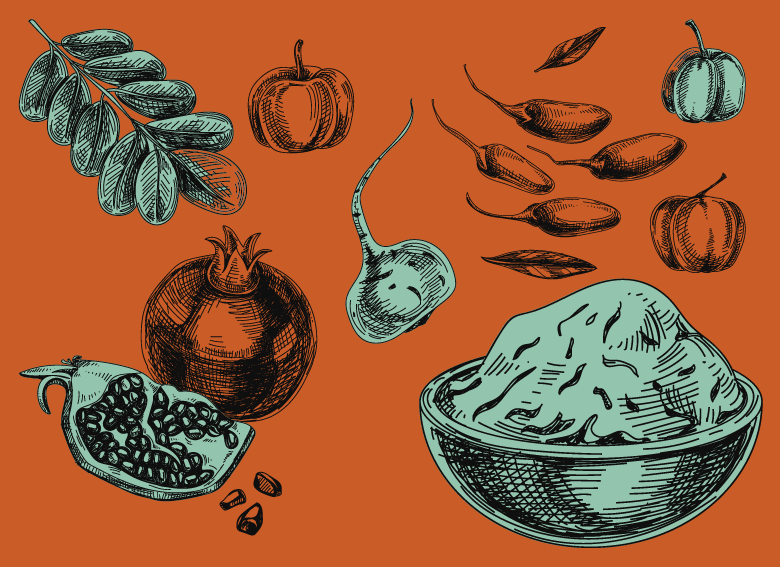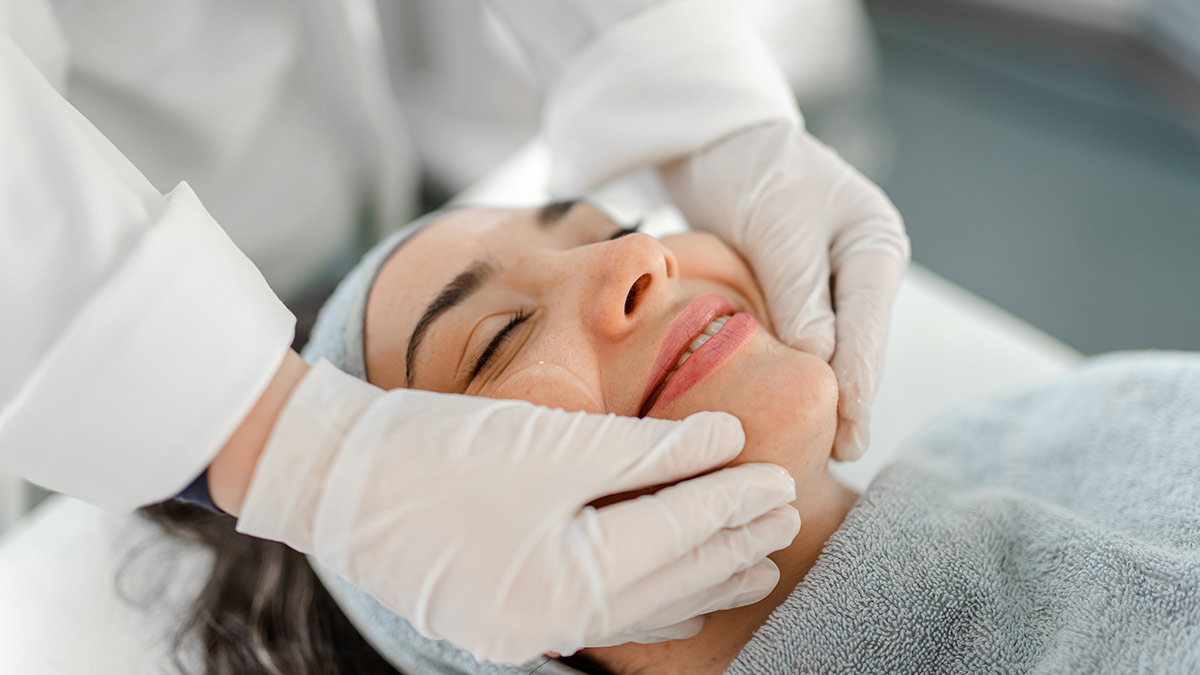Siún Tobin MPSI provides a clinical overview of the multifactorial considerations in women’s health, including conception, contraception and the menopause
In discussing women’s health, we will touch on several topics, including contraception, conception, and menopause. Broadly, each of these health issues is related to female menstruation.
Menstruation is a tightly-regulated cycle of stimulatory and inhibitory effects that results in the release of a single mature oocyte from a woman’s ovaries. The menstrual cycle can be divided into two phases: The follicular phase usually occurs between days one (first day of bleeding) to 14, followed by the luteal phase, which extends until the start of the next menses. Typically, women’s cycle lengths peak at about 25-to-30 years of age and then gradually decline, such that women in their 40s will have shorter cycle lengths. This is generally due to changes in the length of the follicular phase, with the luteal phase typically remaining constant over the years.
Conception
Ovulation is the key phase in a woman’s menstrual cycle when considering conception. The period of ovulation occurs around day 14 of a 28-day cycle, where the oocyte is released from the woman’s ovaries. Importantly, for women with cycles longer than 28 days, ovulation is generally later than the 14th day. The luteal phase is typically 14 days in all women, whereas the follicular phase can range in duration from about 10-to-21 days.
Each month, during the follicular phase, follicle-stimulating hormone causes follicles in one of the woman’s ovaries to mature. Generally, just one of the developing follicles matures to an oocyte, which is released following a sudden surge in luteinising hormone, prompting the transition into the luteal phase of the woman’s cycle. Once ovulation has occurred, the released oocyte begins its five-day journey through the fallopian tubes to the uterus.

As conception will occur where a sperm cell travels through the vagina and into the uterus to join with the woman’s oocyte, women are most susceptible to conceiving a child between their day of ovulation and the two days prior to and after ovulation (days 12-to-16 of a 28-day cycle). Of note, some reference sources suggest that this six-day ‘window’ continues from five days prior to ovulation until the day of ovulation. Importantly, sperm can fertilise an egg for up to 72 hours after ejaculation.
Preparing patients for pregnancy
Most pregnancies occur during the first six menstrual cycles of attempted conception and approximately 80 per cent of couples will conceive during this period.1
Women can attempt to predict the time of ovulation by tracking changes in cervical mucus. The fluid from a woman’s cervix will generally become wet and slippery four days before ovulation and the highest probability of conception is on the day of peak mucus production. Where a woman finds this difficult to decipher, a kit to measure urinary luteinising hormone levels can be recommended by the pharmacist. Rises in body temperature also typically occur during ovulation. This may be measured using a thermometer every morning.
There are no large-scale, randomised clinical trials examining the effect of lifestyle issues such as cigarette smoking, body mass index (BMI), stress, or alcohol and caffeine consumption on fertility.1 However, there is weak evidence which guides lifestyle recommendations for women hoping to become pregnant. For example, smoking by the female partner has been associated with subfertility and smoking cessation should be encouraged where appropriate.1,2 A healthy diet is as important prior to pregnancy as it is during pregnancy. Statistically, women with a BMI in the range of 18.5-to-25kg/m2 are more likely to conceive easily.3 Women who seek fertility advice from their pharmacy should be reminded of the importance of managing their own health — eating a balanced diet, limiting alcohol intake, exercising regularly and limiting psychological stress. Of note, the intensity and duration of exercise can affect female fertility, but the specific type of exercise does not appear to be a factor. Recommendations suggest that vigorous exercise should be limited to five hours per week in those attempting to conceive.4
Folic acid supplementation is essential for all women who are hoping to become pregnant. The World Health Organisation suggests that folic acid should be taken for at least three months prior to becoming pregnant to support spine and brain development of the foetus, which occurs in the first month of pregnancy. It is important to remind women of child-bearing age that an adequate amount of folic acid for a growing foetus’s needs is not available in a standard diet of food alone. Supplementation with 400 micrograms of folic acid daily is recommended for all women who are trying to conceive. Equally important is the inclusion of iron and calcium in a mum-to-be’s diet. Those trying to get pregnant should be encouraged to eat iron-rich foods, including red meat, eggs, pulses and green vegetables two-to-three times every week. Women should be reminded to combine their iron intake with vitamin C intake (oranges, kiwis, berries and peppers) to facilitate maximum absorption of essential nutrients. Calcium is also essential for the development of a baby’s bones. Intake of three servings of calcium-rich foods per day is recommended for women expecting to become pregnant.
Contraception
All oral hormonal contraceptives (OHC) contain an oestrogen (ethinyl estradiol 20-to-50mcg), a progestogen, or a combination of both. The key step targeted by oral contraceptive pills is the suppression of the mid-cycle luteinising hormone (LH) surge, preventing ovulation. Contraceptives containing high doses of oestrogen also act to suppress ovarian folliculogenesis by inhibiting follicle-stimulating hormone (FSH) secretion.
Starting the pill
When dispensing the OHC to a woman for the first time, pharmacist counselling should always be offered. It is best practice to encourage patients to take their pill at roughly the same time each day. ‘Back-up’ contraception is worth recommending to patients during their first cycle on an OHC, as oral follicular development may have occurred prior to menstruation, exposing the woman to a potential ovulation. Ideally, the pill should be commenced on the first day of menstruation, even though some product inserts suggest that the first Sunday after menstruation may be a reasonable start day.

Missed doses
Back-up contraception is generally always needed if two or more consecutive OHCs are missed. Unlike the recommendations for many other medicines, women should be reminded to take a missed pill as soon as they realise they have missed a dose. If one or more pills are missed in the last week of the oral contraceptive treatment cycle, the patient may omit the hormone-free week by cycling two packets of pills. If this is impractical or not possible, extra precautions need to be taken until at least seven consecutive days of the next month of pills have been taken. If two or more pills are missed during the first week of therapy and otherwise unprotected intercourse occurs, emergency contraception should be employed to reduce the risk of pregnancy. If the patient accidentally takes two pills in one day, she should resume her normal schedule of one pill daily, on the next day. Ultimately, she will complete the pill pack one day early, but her protection will not be compromised.
Emergency contraception
Emergency contraception is indicated for women if unprotected intercourse has occurred, exposing the woman to risk of an unplanned pregnancy. Oral emergency contraceptives work primarily by delaying ovulation via suppression of the LH surge. The advantage of ulipristal (ellaOne) over levonorgestrel (Norlevo) is that it is effective in the advanced follicular phase, including after the LH surge has commenced, but not peaked.
Where emergency contraception is requested from the pharmacist, the following factors should be considered:
- The age of the patient.
- The most likely date of ovulation, considering the usual menstrual cycle length, and the dates of the last bleed.
- The timing of the episode(s) of unprotected sexual intercourse.
- Details of pill-taking errors if using the oral contraceptive method.
- Details of any other medicines taken that might affect the contraceptive efficacy.
Both levonorgestrel (LNG) and ulipristal acetate (UPA) are licensed and effective for up to 72 hours after unprotected sexual intercourse, with UPA additionally being licensed for use between 72 and 120 hours post-unprotected intercourse.5,6 The choice of emergency contraceptive is multifactorial and should always involve the preference and needs of the woman. A time of sexual intercourse greater than 72 hours will, of course, out-rule use of LNG. The possibility of drug interactions and the woman’s medical history are also necessary considerations.
Emergency contraceptive pill
Importantly, following treatment with UPA, the delay in ovulation causes a delay (average of 2.1 days) in subsequent menses, which can cause anxiety to recipients.6 The delay in the commencement of menses post the use of LGN is on average 1.2 days.7 If vomiting occurs within three hours of taking either tablet, another tablet should be taken immediately. It is recommended that, subsequent to using LNG or UPA, a local contraceptive (ie, condom) should be used until the next menstruation. LNG is not found to have an effect on regular concurrent hormonal contraception. However, it is said that ellaOne may reduce the contraceptive action of the regular hormonal contraceptive and women should be advised to use a reliable barrier method until the next menstrual period commences.6 This is related to the fact that the effectiveness of a progestogen-containing contraceptive method which is quick-started immediately after administration of UPA might be reduced due to competition at the progesterone receptor site.
Menopause
On the other side of the coin, women who are beyond child-bearing age may need support in the management of symptoms of menopause. Natural menopause is defined as the permanent cessation of menstrual periods, determined retrospectively after a woman has experienced 12 months of amenorrhea without any other obvious cause. The average age for onset of menopause is 51.4 years. Menopause results from complete, or near-complete, ovarian follicular depletion. The resultant fall in oestrogen and associated high follicle-stimulating hormone (FSH) concentrations results in many of the symptoms of menopause.
Symptoms of menopause include hot flushes, sleep disturbances, vaginal dryness and mood swings. Virtually all women experience the menstrual irregularity and hormonal fluctuations prior to clinical menopause, with onset one-to-five years’ prior. In general, the transition from full menstruation to menopause is characterised by a gradual decrease in menstrual bleeding and is sometimes referred to as the ‘menopausal transition’.8
Hot flushes are mediated by thermoregulatory dysfunction at the level of the hypothalamus and are induced by oestrogen withdrawal. They typically begin as a sudden sensation of heat on the upper chest and face that rapidly becomes generalised
Hot flushes
Hot flushes are mediated by thermoregulatory dysfunction at the level of the hypothalamus and are induced by oestrogen withdrawal.9 They typically begin as a sudden sensation of heat on the upper chest and face that rapidly becomes generalised. The sensation of heat lasts from two-to-four minutes, is often associated with profuse perspiration and occasionally palpitations, and is sometimes followed by chills and a feeling of anxiety. Hot flushes usually occur several times per day.9 Hot flushes are particularly common at night and may be described by patients as ‘night sweats’. Importantly, hyperthyroidism should always be considered in the differential diagnosis, as irregular menses, sweats and mood changes are all potential clinical manifestations of hyperthyroidism. Most women will not need pharmacological interventions for the management of their symptoms. Instead, non-pharmacological management may be adopted, including closer room-temperature control, use of a hand-held fan, wearing clothes in layers which can be easily shed, and avoiding triggers (such as spicy foods and stressful situations).
menopause advice
There a several ‘natural’ treatment options for the management of menopausal symptoms which may be suitable for many women seeking menopause-associated advice from their pharmacist. Weight loss, for example, has been shown to minimise the impact of the menopause on women’s lives. Some clinicians recommend vitamin E for the management of hot flushes, though the evidence for the efficacy of same is limited.10 Evening primrose oil, which is a rich source of gamma-linolenic acid, is widely used by postmenopausal women to treat hot flushes. This fatty acid source is known to reduce inflammation. Gamma-linolenic acid is contained in products such as Naudicelle. Available data suggests, however, that evening primrose oil is no more effective than placebo for the reduction of symptoms associated with menopause.11
Phytoestrogens have both oestrogenic and anti-oestrogenic properties and are categorised as isoflavones, coumestans, or lignans. Two types of isoflavones are found in soy beans, chickpeas, and lentils and are thought to be the most potent oestrogens of the phytoestrogens (although they are much weaker than human oestrogens). Lignans are found in flaxseed, lentils, grains, fruits, and vegetables. Most trials have not shown benefit for hot flushes when compared with placebo.12 The most convincing evidence exists for the isoflavones.12 However, as phytoestrogens have mixed agonist and antagonist effects, it is worth considering that they may promote cell growth in patients with oestrogen receptor-positive breast cancer.12 Increasing dietary soy or taking concentrated isoflavone supplements should not be encouraged in this population.

Menopausal hormonal replacement therapy (HRT) is sometimes indicated for patients who suffer from distressing menopausal symptoms. Oestrogen therapy remains the gold standard for relief of menopausal symptoms, in particular, hot flushes. Oestrogen is available in many forms: Oral, transdermal, intravaginal pessaries, and vaginal rings. In general, best practice suggests that women should be initiated on transdermal estradiol (Evorel) because it is associated with a lower risk of venothromboembolism, stroke, and hypertriglyceridemia than oral oestrogens. Common side-effects of oestrogen include breast soreness, which can often be minimised by using lower doses.13 For women who choose oestrogen or combined oestrogen and progestogen therapy (Evorel-Conti), short-term use is suggested (generally not more than five years or not beyond age 60 years).13,14 However, hot flushes persist for an average of 7.4 years, and many women continue to have symptoms for more than 10 years. Some women with persistent symptoms choose longer-term therapy but should be made aware of associated risks. The use of SSRIs and SNRIs has been suggested for the management of hot flushes, particularly for those who may simultaneously suffer with low mood.14







